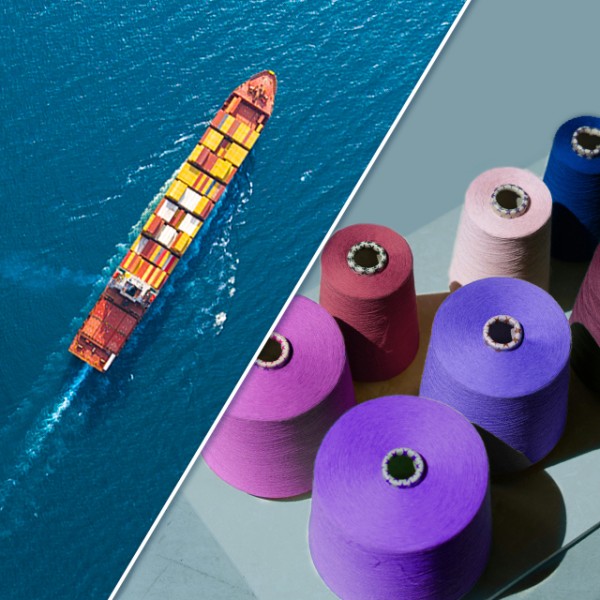September 2025
Supply chain risk exposure in fashion: a growing concern for responsible investors
In the world of investment, fashion might not be the first sector that comes to mind when thinking about systemic risk. But beneath the surface of seasonal trends and glossy campaigns lies a complex and increasingly volatile supply chain landscape, one that’s becoming a material concern for asset managers.
RepRisk’s latest analysis of global supply chain risk reveals a sobering truth: reputational, regulatory, and operational risks are mounting, and they’re not confined to emerging markets or fringe players. They’re embedded in the operations of some of the world’s most prominent brands and they carry direct implications for financial institutions.
# Why fashion supply chains? Why now?
Fashion is one of the most globalized industries, with sprawling supply chains that span continents and rely heavily on subcontracting. This complexity creates fertile ground for business conduct risks, ranging from forced labor and unsafe working conditions to environmental degradation and greenwashing.
RepRisk’s data, drawn from over 2,500,000 documents daily in 30 languages, shows that between 2020 and 2025, nearly 4,000 supply chain risk incidents were linked to over 6,500 companies globally. The U.S. accounted for more than 2,000 of these incidents, more than any other country. And while public companies are often in the spotlight, 87% of implicated firms were private, making them harder to monitor and assess through traditional ESG disclosures.
# Large economies face a high number of supply chain risk incidents at home
# Retail and fashion: Ground zero for supply chain risk
Among all industries, retail, and fashion in particular, stands out as the most exposed to supply chain-related risks. Since 2020, incidents in the retail sector have surged by 43%, with a 22% increase in the past year alone. This trend is not just a reflection of growing scrutiny; it signals deeper structural vulnerabilities.
For asset managers, this matters. Exposure to companies with high supply chain risk can translate into portfolio-level reputational damage, regulatory scrutiny, and financial underperformance.
# Retail is by far the most exposed sector to supply chain risk
Download the full report
Download The fabric of risk: responsible business conduct in fashion’s supply chains to read the full RepRisk Insights Report
# Social risks in fashion supply chains: The Achilles’ heel
RepRisk’s findings show that 62% of all fashion-related supply chain incidents are linked to social issues, such as poor working conditions, human rights abuses, and forced labor. These risks are not theoretical. In 2024, several high-profile fashion brands in Italy were placed under judicial administration following revelations of labor exploitation. One luxury brand was found to be sourcing handbags from suppliers paying workers a fraction of the retail price, while subjecting them to illegal 15-hour shifts.1
Such incidents don’t just damage brand equity, they can trigger legal action, investor backlash, and regulatory penalties. For asset managers, they raise red flags about governance quality, operational resilience, and long-term value creation.
# Environmental risks: A growing concern
While social risks dominate, environmental issues are also gaining prominence within fashion supply chains. Fast fashion brands are disproportionately linked to product-related environmental harm, including excessive resource use and non-compliance with chemical regulations. In one case, a Chinese retailer faced scrutiny for selling products potentially in violation of EU safety standards, highlighting how environmental risks can quickly become cross-border compliance issues.2
Luxury and premium brands, meanwhile, face reputational exposure around animal welfare, with incidents of unethical sourcing practices drawing public and regulatory enforcement.
# Share of top supply chain risks by fashion brand tier
# The regulatory tide is turning
For asset managers with global portfolios, the regulatory landscape is shifting fast. The EU’s Corporate Sustainability Due Diligence Directive (CSDDD) - although significantly narrowed from its original scope - the Corporate Sustainability Reporting Directive (CSRD), and the upcoming EU Forced Labor Regulation are setting new expectations for transparency and accountability in supply chains.
In the U.S., the proposed Slave-Free Business Certification Act could impose annual audit obligations on large companies with global supply chains to detect and eliminate forced labor. And while the UK’s Modern Slavery Act doesn’t mandate due diligence, recent guidance updates have raised the bar for corporate accountability, especially in high-risk sectors like fashion.
These developments are signals of a broader market shift toward responsible business conduct and sustainability governance. Asset managers who fail to anticipate and integrate these changes risk being left behind their competition and facing ongoing compliance challenges.
# From risk to resilience: What asset managers can do
The good news? There’s a growing toolkit for managing these risks. RepRisk’s outside-in approach, based on external, real-time data rather than company self-disclosures, offers a powerful lens for identifying and monitoring business conduct risks across supply chains. This includes private companies and infrastructure projects often overlooked by traditional ESG ratings.
For asset managers, integrating this kind of data into due diligence, engagement, and portfolio construction processes can help:
- Identify high-risk holdings before they become liabilities.
- Engage more effectively with portfolio companies on supply chain transparency.
- Align with emerging regulations and stakeholder expectations.
- Protect long-term value by avoiding reputational and compliance pitfalls.
Get in touch
Supply chain risks are tied to financial, compliance, and reputational risks. To learn how our data can strengthen your due diligence and risk management, request a demo.
To ensure more recent data, RepRisk has transitioned away from using calendar years. In this report, five years of data – from May 1, 2020, to April 30, 2025 – have been analyzed, unless otherwise noted. As a result, for example, the year 2021 refers to the period from May 1, 2020, to April 30, 2021. The fashion sector dataset was compiled by gathering brand names from publicly available sources, such as Fashion United. These brands were then matched to companies in RepRisk’s database using a name-based mapping approach. The analysis includes fashion companies with at least one supply chain risk incident – 285 companies in total, linked to 791 incidents.
Find more on RepRisk’s transparent and rule-based methodology here: RepRisk | RepRisk methodology overview .
RepRisk’s core research scope is comprised of 28 ESG Issues that are broad, comprehensive, and mutually exclusive. Supply chain is one of RepRisk’s 28 ESG Issues and is defined as follows: “This issue refers to companies who are held accountable for the actions of their suppliers. Both vendors and subcontractors are considered part of the supply chain.” Find definitions of all 28 ESG Issues here: https://www.reprisk.com/content/static/reprisk-esg-issues-definitions.pdf.
Copyright 2025 RepRisk AG. All rights reserved. RepRisk AG owns all intellectual property rights to this report. This information herein is given in summary form and RepRisk AG and/or the third party contributors to this report make no representation or warranty that any data or information supplied to or by it or them is complete or free from errors, omissions, or defects. Without limiting the foregoing, in no event shall RepRisk AG and/or the third party contributors to this report have any liability (whether in negligence or otherwise) to any person in connection with the information contained herein. Any reference to or distribution of this report must include a link to the content to provide sufficient context. The information provided in this presentation does not constitute an offer or quote for our services or a recommendation regarding any investment or other business decision, and is not intended to constitute or to be used as a substitute for legal, tax, accounting, or other professional advice. Please note that the information may have become outdated since its publication. Should you wish to obtain a quote for our services, please contact us.



